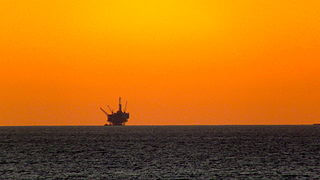Managed Pressure Drilling (MPD) is defined by the International Association of Drilling Contractors (IADC) as “an adaptive drilling process used to more precisely control the annular pressure profile throughout the wellbore.” The objectives of MPD are “to ascertain the downhole pressure environment limits and to manage the annular hydraulic pressure profile accordingly.”
With respect to downhole pressure, drillers are concerned with several conditions such as formation kicks and wellbore ballooning. A formation kick
The downhole fluid pressures are controlled in modern wells through the balancing of the hydrostatic pressure provided by the mud used. Should the balance of the drilling mud pressure be incorrect then formation fluids (oil, natural gas and/or water) begin to flow into the wellbore and up the annulus (the space between the outside of the drill string and the walls of the open hole or the inside of the last casing string set), and/or inside the drill pipe.
…a phenomenon in which fluids are lost to the rock during over-pressured operations, such as found in increased pressures from equivalent circulating density operations, and then flow back when pressure is reduced. This may be confused with a kick.
In a typical deepwater drilling operation, the static mud weight used is always near the fracture opening pressure of the formation because it becomes less compact the deeper the water is between the drill ship or platform and the actual well bore.
 Emerson’s Arjan Van Ginkel made me aware of measurement technology to accurately detect and quantify the wellbore ballooning condition.
Emerson’s Arjan Van Ginkel made me aware of measurement technology to accurately detect and quantify the wellbore ballooning condition.
During circulation, the Equivalent Circulating Density (ECD) exerted by the mud can exceed the fracture opening pressure. Considering that the ECD is greater than the fracture opening pressure, while the static mud weight is below the fracture closure pressure, small cracks in the wellbore side occur and drilling mud spills away.
Often the less dense fluid parts of the mud first, likely to increase the mud density on the return flow rate. As the mud loss occurs while circulating, this fluid releases and is inserted back in the wellbore as the pumps are stopped for example, for making a connection. The fractures are closing again and the mud is pushed out into the wellbore. The volume increases which can be misinterpreted as a kick during connection while it actually is ballooning.
The typical response to increase the mud weight in a kick condition exacerbates the situation in a well-ballooning condition. Arjan noted that Micro Motion Coriolis mass and density flowmeters can directly measure the mass and density of the multi-phase drilling mud. A single Coriolis sensor can measure drilling fluid mass flow rate, volume flow and density measurement for downhole and returns flow lines. By measuring the circulating mudflow for trending, it can provide early warning of well control problems or changes in drilling efficiency.
Managed Pressure Operations (MPO) is a supplier to the oil & gas industry that provides systems for managed pressure drilling and continuous circulating systems incorporating Micro Motion Coriolis technology.
Here is a Youtube video, Drilling Fluids Monitoring – Well Control Events, which illustrates these measurements.

